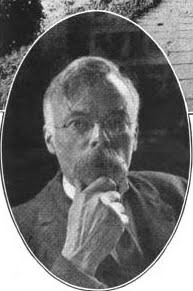Andrew Lawson facts for kids
Quick facts for kids
Andrew Lawson
|
|
|---|---|

Lawson c. 1922
|
|
| Born | July 25, 1861 |
| Died | June 16, 1952 (aged 90) |
| Nationality | Scottish |
| Known for | Report on the 1906 San Francisco earthquake |
| Awards | Hayden Memorial Geological Award (1935) Penrose Medal (1938) |
| Scientific career | |
| Fields | Geology |
| Institutions | University of California, Berkeley |
Andrew Cowper Lawson (born July 25, 1861 – died June 16, 1952) was an important geologist from Scotland and Canada. He became a professor of geology at the University of California, Berkeley. He is famous for leading the report about the big 1906 San Francisco earthquake. This report is often called the "Lawson Report."
Lawson was also the first person to identify and name the famous San Andreas Fault in 1895. After the 1906 earthquake, he was the first to map out the entire length of this fault. Before him, people only knew about parts of it near San Francisco. He also named the Franciscan Complex, which are types of rocks found in California.
Contents
Andrew Lawson: A Geologist's Journey
Early Life and Education
Andrew Lawson was born in Anstruther, Scotland, on July 25, 1861. When he was six years old, his family moved to Hamilton, Ontario, Canada.
Studying Geology
Lawson loved learning about nature. In 1883, he earned his first degree in natural science from the University of Toronto. He then worked for the Geological Survey of Canada. While working, he continued his studies. He earned his master's degree from the University of Toronto in 1885. Later, in 1888, he received his Ph.D. from Johns Hopkins University.
A Career in California
In 1890, Lawson left the Geological Survey of Canada. He worked as a consulting geologist in Vancouver. This meant he gave expert advice on geology to different projects. In October of that same year, he moved to California. He started working as an Assistant Professor of Mineralogy and Geology at the University of California in Berkeley.
Professor at Berkeley
Lawson quickly became a full professor in 1892. He taught and researched at Berkeley until 1928. After that, he became a Professor Emeritus, meaning he was still connected to the university even after retiring. He held this title until his death on June 16, 1952. In 1926, he was also the president of the Geological Society of America.
Helping with Earthquakes
Lawson's work was very important for understanding earthquakes. His detailed report on the 1906 San Francisco earthquake helped scientists learn a lot about how earthquakes happen. He also helped with the construction of the Golden Gate Bridge in the 1930s. He was a consulting geologist for this huge project, making sure the bridge could stand strong.
Designing an Earthquake-Safe Home
Lawson knew a lot about earthquakes. His own home in the Berkeley Hills was specially designed to be strong against them. The famous architect Bernard Maybeck designed it. This house, now called the "Lawson House," is an official local landmark.
His Legacy: Names and Discoveries
Andrew Lawson's name lives on in several ways.
- The mineral Lawsonite is named after him.
- The Lawson Adit is a research tunnel on the UC Berkeley campus. It was originally built for mining research. During the Cold War, it housed equipment to monitor nuclear tests. Today, it holds instruments that study earthquakes.
- Lawson Hill (which is 1,128 feet tall) in Contra Costa County, California, is also named for him.

